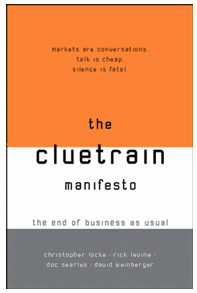Calculating the ROI of corporate blogging

Charlene Li of Forrester is working on a framework for measuring the ROI of blogging for organization, especially those that are concerned about the possible risks of have less control over information flow. Among the benefits she cites are lower-cost public relations, reaching influential enthusiast communities, increased responsiveness to consumer concerns, improved employee innovation and productivity and improved stock price with greater visibility into the organization. In the case of responding to consumer concerns, measurement could come in the form of customer satisfaction and retention data.

Companies feel a tremendous urge to control communications; it seems as bred-in-the-bone as wanting to sell products. They create org charts to define who gets to do the talking. They issue policy statements: only PR can talk to the press. Only Investor Relations can talk to financial folk. Only the CEO can talk to The Journal. We can’t afford to muddy our message or dislocate our positioning. God knows what some disgruntled worker might tell valuable customers! So, let’s set up a command hierarchy and station it in a hardened communications bunker.
You might as well try to sew closed a fishing net. The simple fact is that your employees are already joining the market conversation. And in most cases it’s because they find conversations about what they are working on to be really interesting. They like talking with customers. They like to help. And, sorry to point this out, but they also like complaining if the business is flawed at heart.
The one thing they don’t want to do, would never do on their own, is deliver a message. And if you make that their role, they will be exposed immediately as company tools. We’re all superb at sniffing out the shills: they lack spontaneity, their language is stilted and they are just a little too happy. In fact, in Usenet newsgroups, it’s not uncommon to find participants being warned about postings from particular people who’ve blown their credibility by sounding like corporate mouthpieces.
So, what’s a business to do? People aren’t going to simply repeat messages. You can’t shut them up -- at least not for long -- and you can’t make them mouth words they don’t believe any more than you could get your teenaged children, your spouse, your friends, or anyone to. Save your discipline for the few renegades who, through malice or ignorance, spill beans that need to be kept in the can. Expend your efforts instead on building a company that stands for something worthwhile, so that you can’t wait to unleash every single one of your voices into the wilds of the new global conversation.